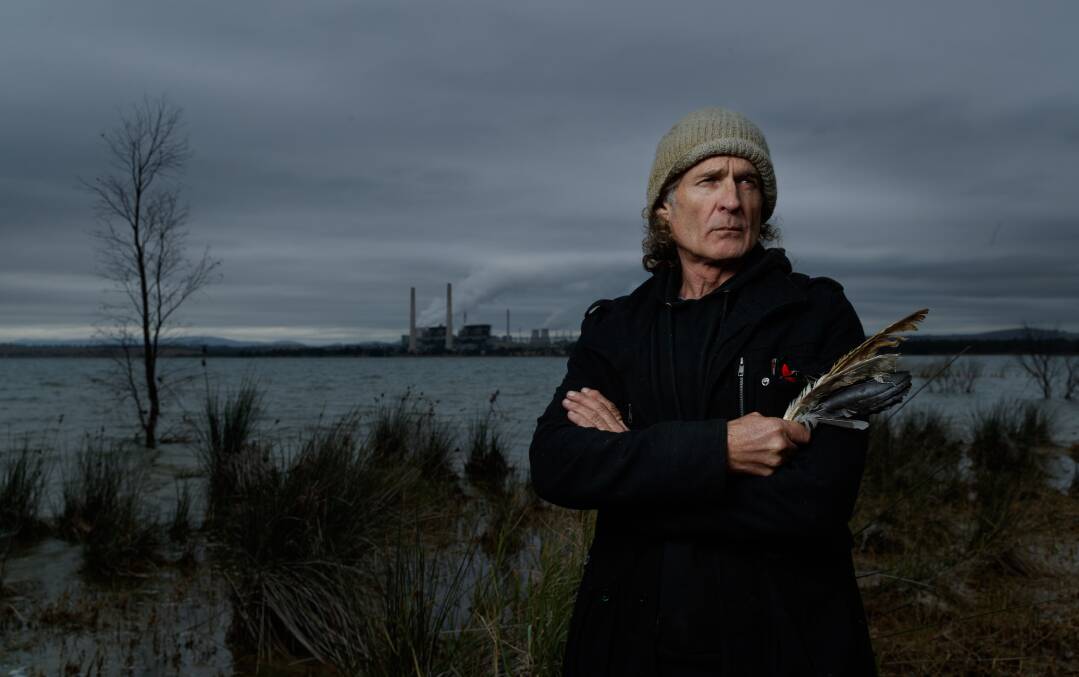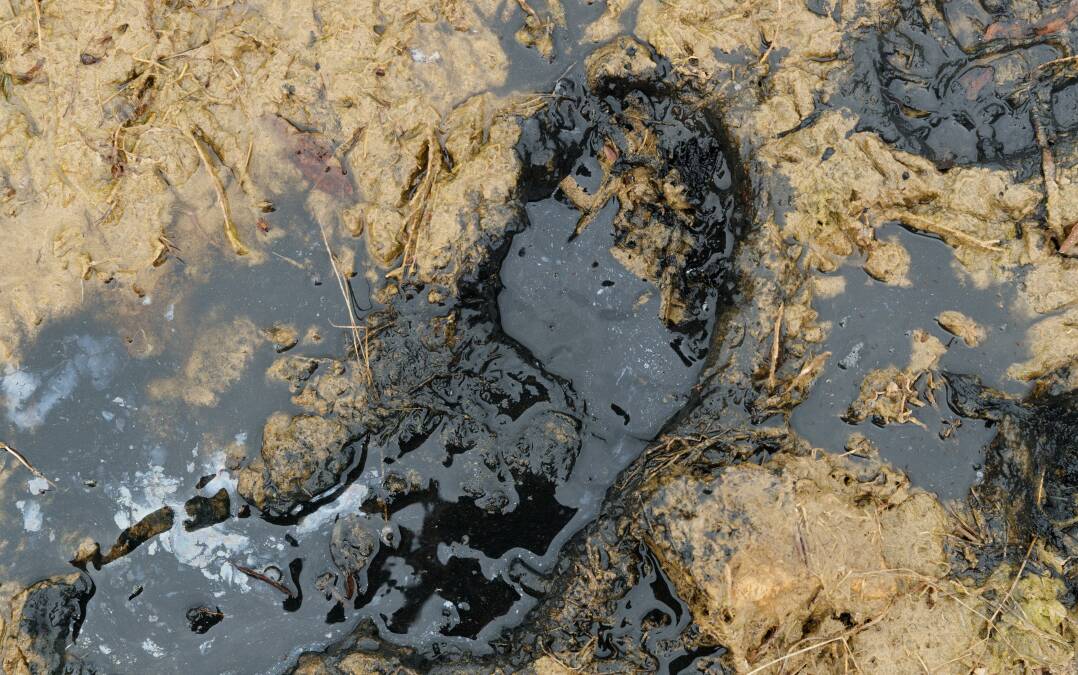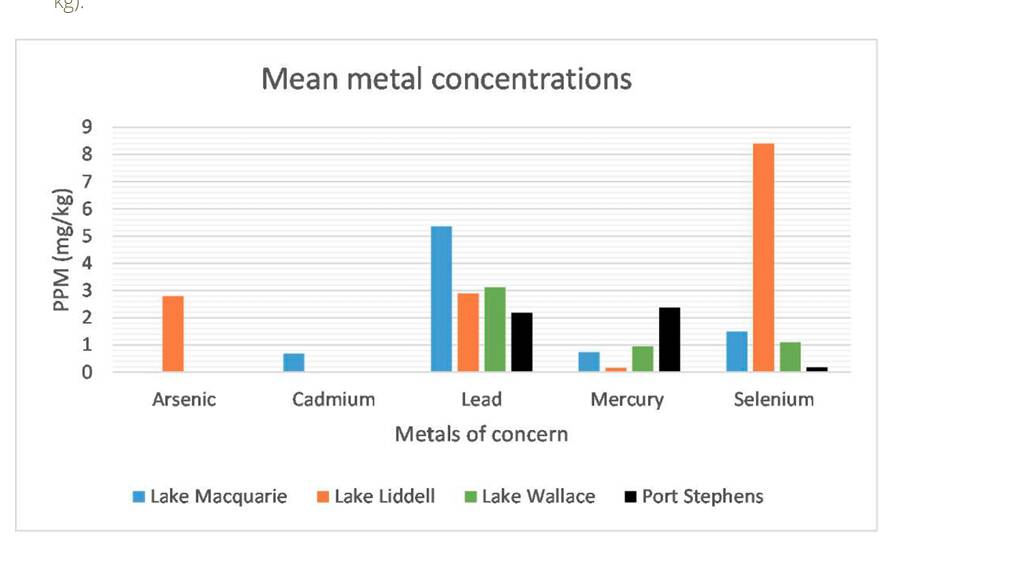
THE impact of coal ash contamination on the Hunter's bird life is "deeply troubling", experts say, as it causes alarming levels of heavy metal build-up which adversely affects their health and reproductive success.
Concentrations of arsenic, lead, selenium, and mercury have been found in up to a dozen different species of birds among those frequenting waterways close to coal-fired power stations.
However, there were also high-levels of heavy metals found in birds living at Port Stephens and the Myall Lakes waterway.
In a report titled "Toxic Habitat: Heavy metal impacts on water birds near NSW coal-fired power stations", the Hunter Environment Centre reveals high levels of bio-accumulation of metals and metalloids in waterbird populations from three lakes contaminated by coal-fired power stations, as well as areas within the Port Stephens Great Lakes Marine Park.
Concentrations of metals found in 65 per cent of the feathers collected from the three contaminated lakes were above identified adverse health and reproduction thresholds, the report says.

And half of all of the feathers collected from all the sites, including the control areas of Port Stephens and Myall Lakes, contained metal concentrations at or above health threshold levels.
The report's author, Paul Winn, said there was no doubt the bio-accumulation of heavy metals was harming population levels, mostly due to the impacts on birds' reproductive success.
"Lead, for example, affects their brain so that they forget where their nests are and lose their nests and their shells can get damaged," he said. The birds' embryos also did not survive if lead levels were too high.
"Different metals have different effects, both behavioural affects, and also effects on the eggs and gonads, so their reproductive success."
Selenium levels were at their highest at Lake Liddell, but there was detectable mercury in about half the birds studied, he said.

The worst we found were from background, at Myall Lakes and Port Stephens, which was confounding, he said, because they were looking for clean samples to provide a point of comparison. "But these levels were very high, a couple of them were above the health threshold."
The report has been shared with the NSW Environment Protection Agency to push for more investigation of the issues revealed in the preliminary research paper.
An EPA spokesman confirmed they have received the report and discussed it with the Hunter Environment Centre, and will "take it into account as much as possible".

"The EPA has commissioned a comprehensive assessment of the environmental health of Lake Macquarie in the vicinity of the coal fired power stations," a statement from the EPA said. "This work will include extensive sampling and analysis of water and sediments in Lake Macquarie over a 12-month period.
"The assessment uses multiple lines of evidence to assess environmental health and is subject to independent peer review to ensure the conclusions are robustly supported by the evidence. The findings from the assessment will provide information that will help inform the future remediation of the power station sites and ongoing monitoring needs."
When considering issues such as heavy metal contamination and bio-accumulation, the EPA uses nationally agreed water quality and sediment quality guidelines, it said, as well as other relevant published and peer reviewed scientific literature.
"These guidelines consider all aspects of environmental health that can be impacted by contamination, such as potential toxicity as well as bio-accumulation. The EPA is aware that AGL Macquarie is performing a contaminated site assessment of the Liddell Power Station site. The assessment will be staged to allow for the proposed decommissioning and demolition activities. It will also inform the need for remedial activities at the premises.
Mr Winn said the issue was whether or not rehabilitation would go far enough.
"The concern we have is that Lake Liddell particularly is a site that might not be rehabilitated to the point where this problem goes away," Mr Winn said. "There's not a lot of population around there to complain about it and we want a much better job of rehabilitation up there than what is currently planned.
"We want to see reuse expanded. At the moment, treasury haven't admitted that they have a significant liability associated with these coal-fired power station sites. There will be things they will do to rehabilitate these sites... but the ash dams are the ones that seem to be always left off the list.

"All they are planning to do is cover them with soil and that's it, so it's just a problem for future generations. We believe that will also lead to the further contamination of lakes and the birds that live on them.
"What we want them to do is to do further inquiries. We think this is an indicative study ... identifying problems that have been hidden for too long."
The bio-accumulation of heavy metals in wild life has never really been studied, he said, and that is not taken into account in the water quality guidelines that have been developed in Australia. In NSW, very little in the way of mitigation has occurred, he said.
"And that's the concern we have, and the issue up at Lake Liddell is very pressing because Liddell is closing next year and we need a plan for decontaminating that lake that doesn't seem to be currently envisaged by AGL or the state government.
"There's a lot of work that we need to do up there ... and we're willing to work with them if they're willing to but first of all they need to acknowledge there is a problem to be addressed. Currently there is a large, leaky pipeline going from Ravensworth to the ash dam and they have been given an extra year to fix it.
"We need regulatory processes so that the pollution that is currently occurring there .. that measures will be put in place to mitigate the amount of pollution that is going into that lake. Unfortunately it's seen as an industrial wasteland and because it's onsite it's not seen as pollution."
Lake Liddell, which substitutes for cooling towers that are absent at the power station, was permanently closed for public recreational use in August 2016 "in the interests of public health and safety", following the discovery of a brain-eating amoeba, Naegleria fowleri, in the lake. At the time, AGL acknowledged that decision "may be disappointing for regular Lake Liddell users".
In the report released today, president of the Hunter bird Observers Club, Dan Williams, said the key concern for bird conservation in the Hunter Valley was the continual loss and alteration of habitat.
Annually, Lake Liddell sees an "incredibly high volume of birds", with BirdLife Australia atlas data showing 118 species of birds recorded on and around Lake Liddell, Mr Williams says in the foreword of the report.
"Lake Liddell holds a significant proportion of the Hunter's population of some species including the Eurasian Coot, Great Crested Grebe, Hoary-headed Grebe, Black Swan and Musk Duck. In HBOC's estimation, it could hold the highest number of Eurasian Coots and possibly Black Swans of any site in the Hunter Valley."
The report is the HEC's third into contamination of lakes near coal-fired power stations. In 2019 the centre released a report revealing the Office of Environment and Heritage had updated warnings about the consumption of mud crabs taken from Lake Macquarie because of cadmium levels, and recommended much stronger regulation of more than 60 million tonnes of coal ash in unlined storage areas on the lake shore.
The coal ash is waste from ageing Vales Point and Eraring power stations, containing heavy metals the centre argues are making their way into the lake system and into the food chain.
The Out of the Ashes report used laboratory analysis of water samples from key lake locations and reviewed environmental licences to conclude both power stations were discharging aluminium, iron and manganese above recommended concentrations for recreational marine waters, as well as arsenic, lead, copper, nickel and zinc above Australia and New Zealand Environment Conservation Council guidelines.
"What we found is that environment protection licences for the power stations do not set limits for heavy metals at three of the four discharge points where our water sampling found elevated concentrations of metals," the report found. "Indeed, neither power station is required to monitor or limit the concentrations of all the heavy metals we found being discharged."
Concerns about the health of Lake Macquarie had historically been on the north because of discharges from the former Pasminco smelter, before shifting to the impacts of power stations and their coal ash disposal areas in the south.







